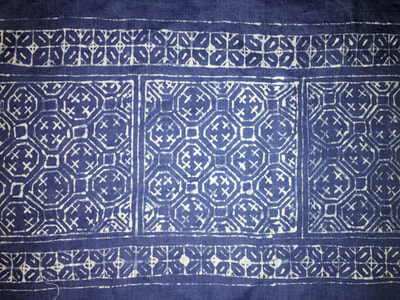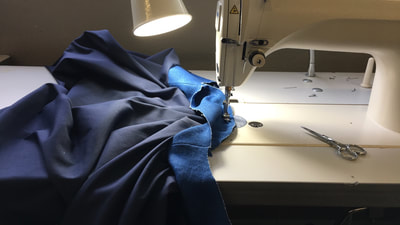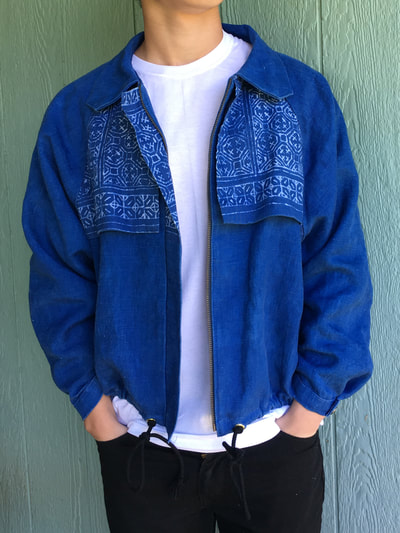Journey
Made from 100% hemp canvas fabric
Hand-printed with soy wax to create resist
Hand-dyed in powdered natural indigo
Batik: a resist indigo dyeing technique that has been practiced amongst the Green Hmong (Hmoob Leeg/Ntsuab) for centuries. It’s important to note that batik is a technique that is practiced widely across the globe, and did not originate from the Hmong. However, a handful of Hmong tribes have established this technique as a main form of decoration on their skirts. It remains an iconic textile within Hmong clothing/fashion.
When traditional meets modern: Traditional Hmong textiles are making their way into modern fashion today as a result of inevitable cultural assimilation. It is important to be critical about the dynamics of "Hmong inspired" and to question our own usage and knowledge of these textiles. As we continue to use them in modern designs, I fear we may begin to lose touch with the craft and become disconnected with the history/significance of these cultural textiles.
Hypocritical design: I am critical about my own work. “Journey” was a project in which I explored the boundaries of traditional textiles in fashion design. I sought to learn the skill of batik, the meaning of the motifs/patterns, and what batik meant to the women who practiced it, in hopes that I would fully understand the craft. However, upon completion of the jacket, I wondered to myself “Is it ethical to take a textile pattern that has had meaning/purpose, and simply plaster it on a jacket for aesthetic reasons?”
Hand-printed with soy wax to create resist
Hand-dyed in powdered natural indigo
Batik: a resist indigo dyeing technique that has been practiced amongst the Green Hmong (Hmoob Leeg/Ntsuab) for centuries. It’s important to note that batik is a technique that is practiced widely across the globe, and did not originate from the Hmong. However, a handful of Hmong tribes have established this technique as a main form of decoration on their skirts. It remains an iconic textile within Hmong clothing/fashion.
When traditional meets modern: Traditional Hmong textiles are making their way into modern fashion today as a result of inevitable cultural assimilation. It is important to be critical about the dynamics of "Hmong inspired" and to question our own usage and knowledge of these textiles. As we continue to use them in modern designs, I fear we may begin to lose touch with the craft and become disconnected with the history/significance of these cultural textiles.
Hypocritical design: I am critical about my own work. “Journey” was a project in which I explored the boundaries of traditional textiles in fashion design. I sought to learn the skill of batik, the meaning of the motifs/patterns, and what batik meant to the women who practiced it, in hopes that I would fully understand the craft. However, upon completion of the jacket, I wondered to myself “Is it ethical to take a textile pattern that has had meaning/purpose, and simply plaster it on a jacket for aesthetic reasons?”









